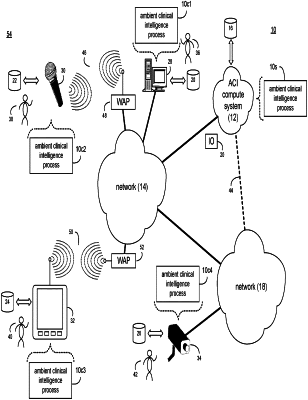| CPC G16H 15/00 (2018.01) [G06V 20/41 (2022.01); G10L 15/26 (2013.01); G16H 10/60 (2018.01); G16H 40/20 (2018.01)] | 15 Claims |

|
1. A computer-implemented method, executed on a computing device, comprising:
obtaining encounter information during a patient encounter, wherein the encounter information includes machine vision encounter information and audio encounter information;
processing the machine vision encounter information and the audio encounter information of the encounter information to detect the execution of a physical event during the patient encounter, thus defining a detected physical event, wherein the detected physical event is associable with a verbal component identified in the audio encounter information and the physical event identified in the machine vision encounter information, wherein the detected physical event is identified, at least in part, by comparing the machine vision encounter information to a physical events datasource; and
deriving information for the detected physical event by generating a text-based description of the detected physical event and annotating a medical record to include the text-based description of the detected physical event, wherein the information derived for the detected physical event includes the machine vision encounter information and the audio encounter information, wherein deriving the information for the detected physical event includes:
monitoring a status of a patient over a period of time by comparing numeric values of the information derived for the detected physical event in the annotated medical record to previous numeric values of the information derived for the detected physical event in the annotated medical record, and
determining the appropriateness of the detected physical event based upon, at least in part, the text-based description of the detected physical event.
|